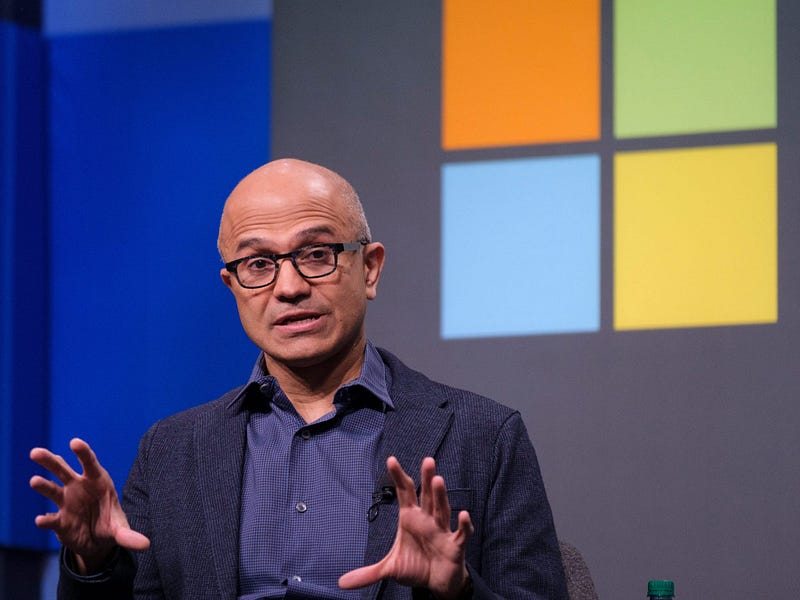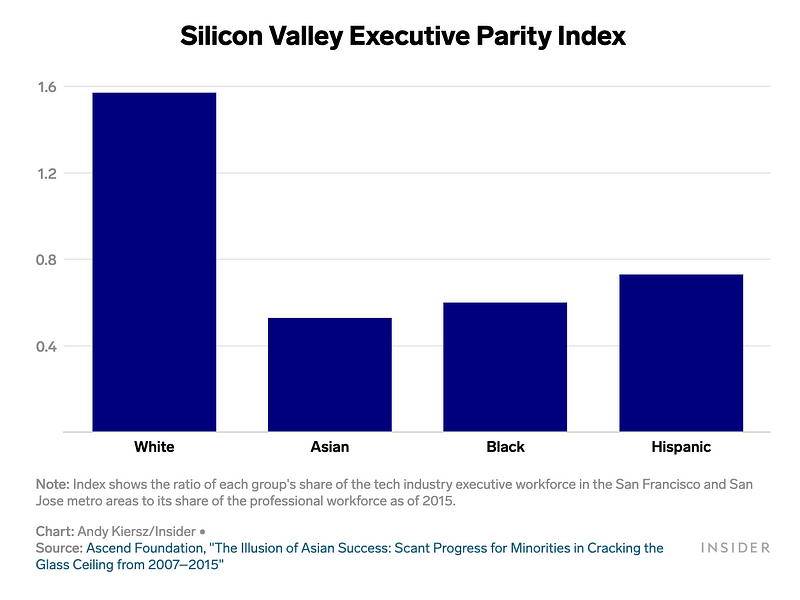Understanding the Underrepresentation of Asian Americans in Executive Roles
Written on
The Myth of the Model Minority
Despite the prevalent stereotype that Asian Americans are a "model minority" overrepresented in leadership, the reality is much more nuanced. A deeper examination of the data reveals significant barriers that hinder Asian Americans from ascending the corporate hierarchy.

Prominent figures like Satya Nadella, CEO of Microsoft, highlight the presence of Asian Americans in high-profile roles. However, the pathway to leadership for Asian Americans remains problematic. While they are prevalent in professional positions, research indicates they are significantly underrepresented in management and executive roles.
A 2020 study conducted by Crist Kolder Associates analyzed the C-suites of Fortune 500 and S&P 500 companies, revealing that only 38 CEOs, or 5.6% of the total 682 executives studied, identified as Asian or Indian. This disparity suggests that Asian Americans face unequal promotional opportunities compared to their white counterparts.
Equity in Promotions: A Major Concern
According to Buck Gee, an executive advisor to the Ascend Foundation, the issue is not merely representation across various roles but rather the fairness of promotions. The Ascend Foundation's examination of 2018 data from the Equal Employment Opportunity Commission (EEOC) showed that Asian Americans represented around 13% of the professional workforce but only 6% of executive and senior officer positions.

To clarify this disparity, the Ascend authors created an "Executive Parity Index," comparing the percentage of executives to their professional counterparts. An index above 1 indicates overrepresentation, while below 1 indicates underrepresentation. Findings showed that white Americans were overrepresented in executive roles, whereas Asian Americans and other non-white groups lagged behind.
This trend reveals that Asian Americans and other minorities do not advance as quickly as their white peers within the corporate structure. The proportion of white executives exceeds their share of the professional workforce, indicating a systemic bias in promotions.
Examining Industry-Specific Trends
While national data sheds light on these disparities, specific industries also reflect troubling trends. An Ascend Foundation analysis focused on Silicon Valley revealed that although Asian Americans constituted about 47% of the professional workforce, they were similarly underrepresented in executive roles.

Furthermore, similar results were observed in the finance and insurance sectors based on 2018 data.

Breaking the Glass Ceiling
These findings suggest a flawed executive pipeline where Asian Americans and other minorities are not promoted at the same rate as their white peers. However, organizations can implement strategies to improve equity in promotions.
Gee emphasizes the necessity for diversity and inclusion programs to assess three critical issues: recruitment diversity, retention diversity, and promotion equity. He advocates for data-driven approaches to better understand the situation and suggests creating executive sponsorship programs for promising AAPI senior managers.
Denise Peck, an executive advisor at the Ascend Foundation, shares her experience as a mentor in a successful program at Cisco, where mid-level Asian managers benefited from lectures, mentoring, and skill-building workshops. Many participants experienced significant career advancements, with some achieving director-level positions shortly after completing the program.
This video discusses the challenges Asian Americans face in reaching the top levels of corporate leadership, highlighting the systemic barriers in promotions.
In this video, a CIA spy warns about potential societal shifts by 2030, emphasizing the importance of trust in navigating personal and professional decisions.